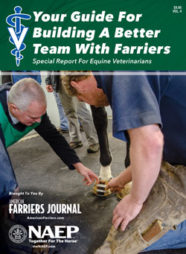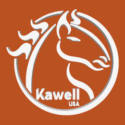A farrier must understand general business terminology. Here are 25 terms you will benefit from understanding:
Accounts Payable — Bills to be paid as part of the normal course of business. Until the invoice is paid, the amount due is known as an accounts payable.
Accounts Receivable — Debt or money owed to you from sales of products or services, such as hoof-care work or products.
Accrual-Based Accounting — A business accounting method which assumes there will be bills to be paid (known as accounts payable) and/or sales made that will be paid later (known as sales on credit). You report income when it is earned.
Assets — Property of your farrier business, including cash, inventory, equipment, etc. Assets are any possessions that have value in an exchange or trade. The IRS defines assets, as they relate to taxes when you buy a piece of equipment. If you call a purchase an expense, then you can deduct it from taxable income. If you call it an asset, you can’t deduct it — however you can list it on your financial statement.
Bill — An acknowledgment that a specified sum of money is due for goods or services. A bill marked as paid becomes a receipt.
Break-Even Point — The actual amount of sales that your farrier business needs to earn in order to equal its expenses or costs so as to not lose or make money.
Cash Basis — A type of business accounting method that doesn’t use standard accrual accounting. It records only cash receipts and cash spending, without assuming sales made on account (known as sales on credit) or bills to be paid as part of the normal course of your business (known as accounts payable). You report income when cash is received.
Cash Sales — Sales made in cash, with credit cards or by check. The opposite of sales on credit, which are sales made on account or to be paid later (shoeing jobs you leave a bill for, or bill for from home after the call).
Doing Business As (DBA) — “Doing Business As,” followed by a company name, also commonly called a fictitious business name. When a sole proprietor operates a company using any name except his or her own given name (5-Star Horseshoeing, for instance), then the DBA or fictitious business name registration establishes the legal ownership to satisfy banks, local authorities and customers.
Depreciation — An accounting and tax concept used to estimate the loss of value of assets over time. For example, farrier trucks and tools depreciate with use.
Dividends — Money distributed to the owners of a business as profits.
Earnings — Also known as income or profits. It is defined as sales less the costs of sales and expenses.
Equity — Difference between assets and liabilities.
Expense — The amount you spend or consume. In business accounting, expenses are deductible against taxable income. Common expenses are rent, salaries, advertising, travel, etc. Questions arise because some farriers have trouble distinguishing between expenses and purchase of assets. When you purchase equipment, if you decide to call it an expense, then you can deduct that amount from your taxable income, so it reduces taxes.
Gross Margin — The difference between total sales revenue and total cost of goods sold. Gross margin can be expressed in dollar or percentage terms.
Gross Margin Percent — The gross margin divided by sales, displayed as a percentage.
Interest Expense — Interest paid on debts. Interest expense is deducted from profits as expenses and is either long-term or short-term interest.
Invoice — A non-negotiable piece of paper issued by a seller to the buyer. It identifies both the parties and lists, describes and quantifies the items sold, shows the date of shipment and mode of transport, prices and any discounts and delivery and payment terms. When signed by the seller, an invoice serves as a demand for payment and becomes a document of title when paid in full.
Limited Liability Company (LLC) — A form of business organization combining elements of partnerships and corporations, in which both managing and non-managing partners are protected from liability to some degree.
LLCs have a different tax liability than a corporation and are different for different states, with advantages in some that aren’t relevant in others. In general, an LLC has to be missing two of the four characteristics of a corporation: limited liability, centralized management, continuity of life and free transferability of ownership interest.
Materials — Items involved in the assembly or manufacturing of goods you sell (shoes, pads, etc.) Materials are included in the cost of sales.
Net Profit — The same as earnings or net income, which is income less taxes and interest.
Operating Expenses — Expenses incurred in conducting your normal farrier business. Operating expenses may include wages, administrative and research costs, but excludes interest, depreciation and taxes.
Profit Or Loss Statement — An income statement that shows sales, cost of sales, gross margin, operating expenses and profits or losses. Gross margin is sales/income less cost of sales. A P&L (profit and loss) is gross margin less operating expenses and taxes. The result is profit if it’s positive, a loss if negative.
Receipt — A written/printed acknowledgment that a specified sum of money has been received as an exchange for goods or services.
S Corporation (S Corp) — Used for family and small business companies. The profits or losses go straight through to the S Corp owners, without first being taxed separately. This means that the owners of the farrier corporation can take their profits home without first paying the corporation’s separate tax on profits, so those profits are taxed just once for the S Corp owner.
Based in Webster, N.Y., Esco Buff is a member of the International Horseshoeing Hall Of Fame. He holds a Ph.D. in business administration.







